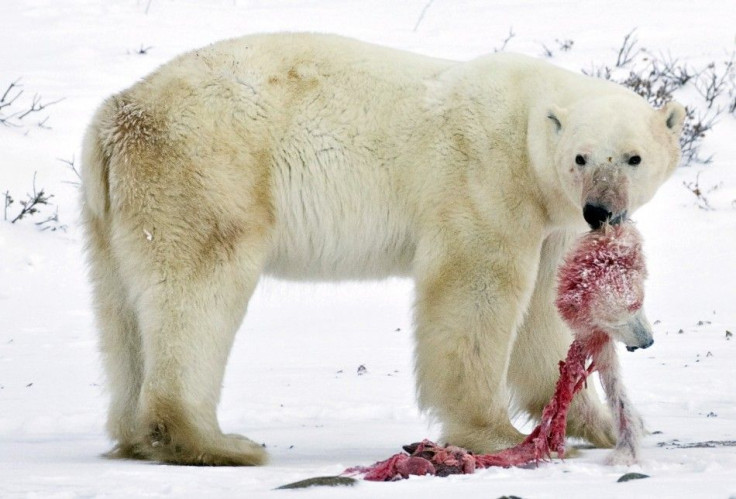Beyond The Polar Bear: Wildlife Threatened By Climate Change [PHOTOS]
While you may chiefly think of polar bears and other Arctic creatures as the primary victims of global warming, there are actually many other animals and plants in the U.S. that are threatened by rising temperatures.

Polar Bears
With the retreat of sea ice in the Arctic, this poster child for the dangers of climate change is losing its hunting grounds. The polar bear hunts its prey by slipping through holes in the ice. But now, with that ice coverage reaching record lows in recent years, there have been reports of starving, encroaching on human habitats and even eating each other.
Oysters
Ocean acidification is one consequence of climate change that threatens many shellfish, including oysters. As carbon dioxide dissolves in sea water, it reduces the saturation levels of the mineral calcium carbonate, a key component in the shells and skeletons of oysters. Rising carbon dioxide emissions mean that many ocean creatures will lack for the basic building blocks they need to maintain their shells.
Salmon
Rising temperatures can be found in the oceans and streams of America too. The heating up of streams and rivers, combined with a more sluggish flow thanks to decreasing snowpack, spells bad news for salmon, which require fast-flowing, cold streams to reproduce.
Atlantic Cod
Many ocean fish are built to tolerate cold waters, and the warming ocean waters are forcing them to seek relief further north. This brings them into unfamiliar territory, and those that don’t migrate may die.
American Pika
This little mountaintop-dwelling rodent is quite temperature-sensitive -- exposure to anything above 77.9 degrees Fahrenheit for six hours or more can kill them. The U.S. government declined to list the pika as an endangered species in 2010, but there are studies underway to determine how future climate change effects could threaten the little mammal.
Baltimore Oriole
Climate change mucks with many of the signals that govern a bird’s life cycle and causes the timing of migration and reproduction to change. The migration patterns and ranges of many migratory birds like the oriole have become altered over the last 40 years -- one Audubon report in 2009 found that nearly 60 percent of 305 species in North America have shifted their migration paths north by an average of 35 miles. Shifting migration patterns brings the birds into less familiar territory that they might not be suited to, and a change in migration timing may put the birds out of sync with their food sources.
Monarch Butterflies
These beautiful orange insects fly thousands of miles southward each year to their wintering grounds in Mexico. But human development is shrinking those wintering grounds, and climate change is impacting the plants they feed and roost upon.
Cherry Trees
Many plants rely on temperature cues in order to figure out when to flower, and, thanks to warming trends, blooming dates have been inching earlier in recent years. One 2011 paper published in the journal PLoS ONE estimated that climate change could push the peak bloom dates for Washington, D.C.’s famous cherry trees back into mid-March or earlier over the next 40 years, leaving them vulnerable to late season winter storms (like the ones we’ve been experiencing on the East Coast this month).
© Copyright IBTimes 2024. All rights reserved.





















